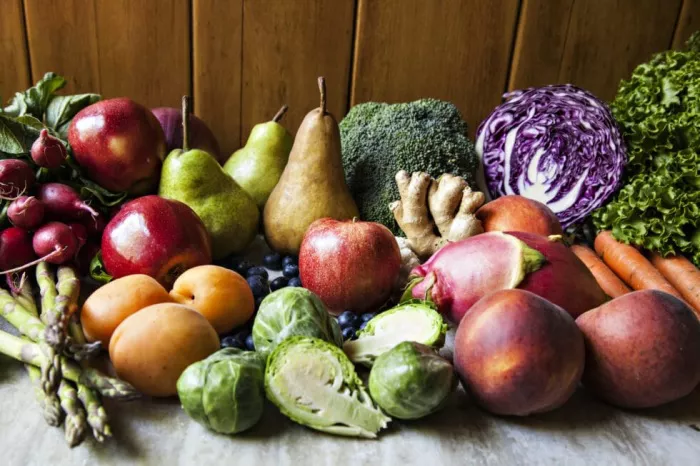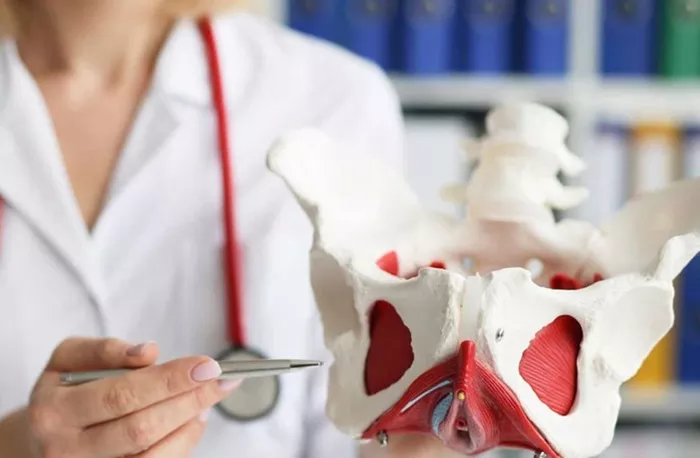Embarking on a weight loss journey often involves navigating the intricacies of nutrition, and the role of protein in this context is paramount. Protein is not only a vital macronutrient for overall health, but it plays a crucial role in supporting weight loss efforts. In this comprehensive guide, we explore the relationship between protein and weight loss, deciphering the optimal grams of protein per day to aid in shedding excess pounds.
The Protein and Weight Loss Connection
Before delving into the specific grams of protein needed for weight loss, it’s essential to understand how protein contributes to the process. Protein is known for its satiating effect, meaning it helps individuals feel full and satisfied. This can be particularly beneficial in a calorie deficit, which is a common approach to weight loss where the body burns more calories than it consumes.
Moreover, protein has a higher thermic effect of food (TEF) compared to carbohydrates and fats. This means the body expends more energy in the process of digesting and metabolizing protein. As a result, a higher protein intake can potentially boost the overall calorie expenditure, supporting weight loss efforts.
Determining Protein Needs
The grams of protein needed for weight loss are not one-size-fits-all; they depend on various individual factors. These factors include age, gender, activity level, current weight, and overall health. Additionally, the intensity and type of physical activity one engages in can influence protein requirements.
A general guideline recommended by health organizations suggests a daily protein intake of 0.8 grams per kilogram of body weight. However, for those actively pursuing weight loss, research indicates that a higher protein intake may be beneficial. The American College of Sports Medicine, for instance, suggests a range of 1.2 to 2.2 grams of protein per kilogram of body weight for athletes and those engaged in regular intense exercise.
Protein’s Role in Preserving Lean Mass
One of the key challenges in weight loss is ensuring that the majority of the weight lost comes from fat rather than lean muscle mass. Insufficient protein intake can potentially lead to muscle loss, which is undesirable for several reasons. Preserving lean mass is essential for maintaining metabolic rate, supporting overall strength and function, and achieving a more toned and fit appearance.
By increasing protein intake, individuals undergoing weight loss can provide the body with the necessary building blocks to preserve muscle mass. This becomes particularly crucial during a calorie deficit when the body may turn to breaking down muscle for energy. Higher protein intake helps mitigate this effect, allowing individuals to lose weight while preserving lean mass.
Calculating Protein Needs for Weight Loss
To determine the optimal grams of protein per day for weight loss, a practical approach involves calculating protein needs based on individual factors. Here’s a step-by-step guide:
Calculate Basal Metabolic Rate (BMR): BMR represents the number of calories the body needs at rest. Several online calculators can estimate BMR based on factors such as age, gender, weight, and height.
Factor in Physical Activity: Multiply the BMR by an activity factor to account for daily physical activity. The Harris-Benedict equation provides a commonly used method for estimating total daily energy expenditure (TDEE), which includes activity factors.
Determine Caloric Deficit: Establish a moderate caloric deficit to promote weight loss. A deficit of 500 to 1,000 calories per day is often considered a safe and effective range for gradual weight loss.
Calculate Protein Intake: Allocate a portion of the remaining calories to protein. A common recommendation is to aim for 25% to 35% of total daily calories from protein. Since each gram of protein provides 4 calories, divide the allocated protein calories by 4 to obtain the grams of protein needed.
As an example, if someone has a TDEE of 2,000 calories and aims for a daily caloric intake of 1,500 calories to create a deficit, allocating 30% of calories to protein would be 450 calories from protein. This would translate to approximately 113 grams of protein per day (450 calories ÷ 4 calories per gram).
Protein Timing
While calculating the grams of protein per day is crucial, the timing of protein intake also plays a role in optimizing weight loss benefits. Distributing protein intake evenly across meals and including protein in each meal can enhance satiety and contribute to a more balanced blood sugar level.
Additionally, incorporating protein into meals and snacks can help control cravings and reduce the likelihood of unhealthy food choices. Studies suggest that a higher protein intake during weight loss can improve body composition, including a greater loss of fat mass and preservation of lean muscle mass.
Protein-Rich Foods for Weight Loss
Achieving the recommended grams of protein for weight loss involves incorporating a variety of protein-rich foods into the diet. Opting for whole, nutrient-dense sources of protein is essential for overall health and well-being. Here are some examples of protein-rich foods suitable for a weight loss-focused diet:
Lean Meats: Chicken breast, turkey, lean cuts of beef, pork loin, and veal.
Fish: Salmon, tuna, cod, tilapia, and other fatty and lean fish varieties.
Eggs: A versatile source of high-quality protein.
Dairy: Greek yogurt, cottage cheese, and low-fat milk.
Plant-Based Proteins: Lentils, chickpeas, black beans, tofu, tempeh, and edamame.
Nuts and Seeds: Almonds, peanuts, chia seeds, and sunflower seeds.
Quinoa: A protein-rich grain that also provides essential amino acids.
Protein Supplements: Whey protein, pea protein, and other supplements can be convenient additions to meet protein goals.
Considerations for Special Diets
For individuals following specific diets, such as vegetarianism, veganism, or those with food allergies, obtaining adequate protein while adhering to dietary restrictions is essential. Plant-based protein sources, including legumes, tofu, and quinoa, can be valuable components of a vegetarian or vegan weight loss plan.
Additionally, for those with lactose intolerance or dairy allergies, alternatives such as lactose-free dairy or fortified plant-based milk can contribute to protein intake. Incorporating a variety of protein sources ensures a well-rounded and nutritionally adequate diet while supporting weight loss goals.
Potential Challenges and Solutions
While understanding the importance of protein and weight loss is crucial, individuals may face challenges in meeting their protein goals. Common barriers include taste preferences, time constraints, and misconceptions about dietary needs.
Addressing taste preferences involves experimenting with various protein sources and cooking methods to find enjoyable options. Time constraints can be mitigated by planning and preparing meals in advance, incorporating quick and convenient protein sources, and utilizing protein-rich snacks.
Misconceptions about protein needs and sources can be addressed through education and consultation with a registered dietitian or nutritionist. These professionals can provide personalized guidance based on individual preferences, dietary restrictions, and weight loss goals.
Monitoring Progress and Adjusting Protein Intake
As individuals progress in their weight loss journey, monitoring changes in body composition, energy levels, and overall well-being is crucial. Adjusting protein intake based on these factors ensures a dynamic and personalized approach to achieving weight loss goals.
If lean muscle mass preservation becomes a concern or if energy levels decline, increasing protein intake within the recommended range can be beneficial. Conversely, if weight loss stalls, reassessing overall caloric intake and potentially adjusting protein, carbohydrate, and fat distribution may be necessary.
Potential Risks of Excessive Protein Intake
While protein is essential for weight loss, excessive protein intake may pose potential risks. High-protein diets may lead to kidney strain in individuals with pre-existing kidney conditions. Moreover, consuming excessive protein from sources high in saturated fats, such as certain cuts of red meat, may contribute to cardiovascular issues.
Maintaining a balanced and varied diet, incorporating lean protein sources, and staying within the recommended protein range help mitigate potential risks associated with excessive protein intake. Consulting with a healthcare professional or nutrition expert can provide personalized guidance based on individual health considerations.
Conclusion
In conclusion, the relationship between protein and weight loss is a dynamic interplay that requires careful consideration and planning. Determining the optimal grams of protein per day involves assessing individual factors, setting realistic weight loss goals, and making informed choices about protein sources.
Protein’s role in preserving lean mass, supporting satiety, and enhancing overall metabolic function positions it as a valuable ally in the pursuit of weight loss. By calculating protein needs based on individual factors, incorporating protein-rich foods, considering dietary preferences and restrictions, and monitoring progress, individuals can strike the right balance for weight loss success.
As with any aspect of nutrition, adopting a personalized and sustainable approach is key. Building a foundation of healthy habits, including regular physical activity and a well-rounded diet, contributes to long-term weight management and overall well-being. With the right knowledge and a mindful approach, individuals can harness the power of protein to support their weight loss journey effectively.
[inline_related_posts title=”You Might Be Interested In” title_align=”left” style=”list” number=”6″ align=”none” ids=”3281,3247,3222″ by=”categories” orderby=”rand” order=”DESC” hide_thumb=”no” thumb_right=”no” views=”no” date=”yes” grid_columns=”2″ post_type=”” tax=””]






























